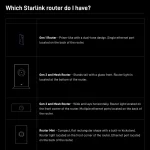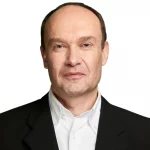End of the Line for TV White Space Broadband Tech in the UK UPDATE

The chances of any ISPs deploying long-range TV White Space (TVWS) based wireless broadband networks to serve remote rural UK premises has just significantly declined. Ofcom has given notice that their related device (WSD) authorisation framework is no longer available.
Just to recap. The TVWS technology harnessed the gaps that exist between radio spectrum in the Digital Terrestrial TV (DTTV) bands – within 470MHz to 790MHz. Such gaps are normally intended to help minimise the risk of interference between channels, although a new dynamic spectrum management system (database) meant that they could also be used to deliver data (i.e. this database has to account for any changes in the TV channel / spectrum assignments).
A tiny number of network operators and ISPs, such as Broadway Partners (now part of Voneus), did build a number of wireless broadband networks using this same technology and some even promised download speeds of up to 50Mbps. But the solution never really took off and today the focus has switched to deploying gigabit-capable networks, which is a level of performance that TVWS could never hope to achieve.
Advertisement
However, Ofcom has today announced that the TV white space device (WSD) authorisation framework is “no longer available“, which is because the only remaining company to operate a TV white space database in the UK – RED Technologies – has stopped offering this service.
The TV white space device (WSD) authorisation framework is no longer available.
This follows RED Technologies serving notice of termination of its contract with Ofcom. RED Technologies was the only remaining operator of TV white space databases in the UK. This means that automatically configurable WSDs can no longer operate on a licence exempt basis and that we will not issue any more licences for manually configurable white space devices (MCWSDs).
We plan to revoke the Licence Exemption Regulations for WSDs (the Wireless Telegraphy (White Space Devices)(Exemption) Regulations 2015).
As we said in our latest spectrum management strategy, we continue to explore ways in which different technical solutions, including databases, can support more spectrum sharing in the future.
At present it’s unclear whether any remaining TVWS based wireless broadband networks are still operating in the UK (we haven’t seen any updates in years). But if they are, then it would appear as if they may struggle to maintain that functionality for very long. We should point out that this also impacts other WSD uses too, such as sensors and media connectivity devices etc.
UPDATE 4:46pm
Ofcom has confirmed that there were no live licences at the time of closure of the last database, and that the database provider reported no active licence-exempt devices at the time of closure. “Accordingly, we believe that there were not any authorised networks remaining in operation under the framework,” said a spokesperson for Ofcom.
Advertisement
Mark is a professional technology writer, IT consultant and computer engineer from Dorset (England), he also founded ISPreview in 1999 and enjoys analysing the latest telecoms and broadband developments. Find me on X (Twitter), Mastodon, Facebook, BlueSky, Threads.net and Linkedin.
« Ofcom Investigate Virgin Media UK Over Digital Phone Migrations
Broadband ISP BT UK Discounts 500Mbps Full Fibre to £34.99 »























































This was always an awkward technology. Long range but slow using niche and expensive kit.
Fixed lines or FWA or 4G are all far more widely available and can often be extended into the remote areas TVWS is aimed at for less money and hassle using very well established technologies.
Never worked long range in the UK. Better at the edge – Short hops, punch through trees and clutter to maintain bandwidth or you’d end up receiving BBC Belfast in Norfolk.
Issue was the propogation model utilised by the database limited channel availability – especially contiguous channels in higher emission radios, differences between regulatory authorities for manufacturers with the UK one of the only EU countries (ETSI) to adopt limiting development focus for manufacturers.
It is unsurprising nobody is actually using TVWS in the UK.
Even in the USA, a 2021 report indicated just 300 devices were registered there. It is difficult to confirm if this figure is correct but take-up is undeniably low. This, even with the likes of Microsoft lobbying hard on the technology’s behalf.
The propagation characteristics are good but,
in the end, other widely available technologies can work as well or better without the extra overhead that the clever TVWS system requires.
In East-Africa, there are several deployments in the coastal areas though operating under Proof of Concept scenarios as auxiliary connectivity for ambitious rural connectivity projects. There is hope for TVWS in africa howeverz should the manufacturer’s shy away from the high equipment development costs, then it will be a lost cause here too.
This would be ideal for the last 5% that even falls out of the scope of BDUK that no one wants to touch, i cant understand why this was not pushed harder for those really awkward to reach areas.